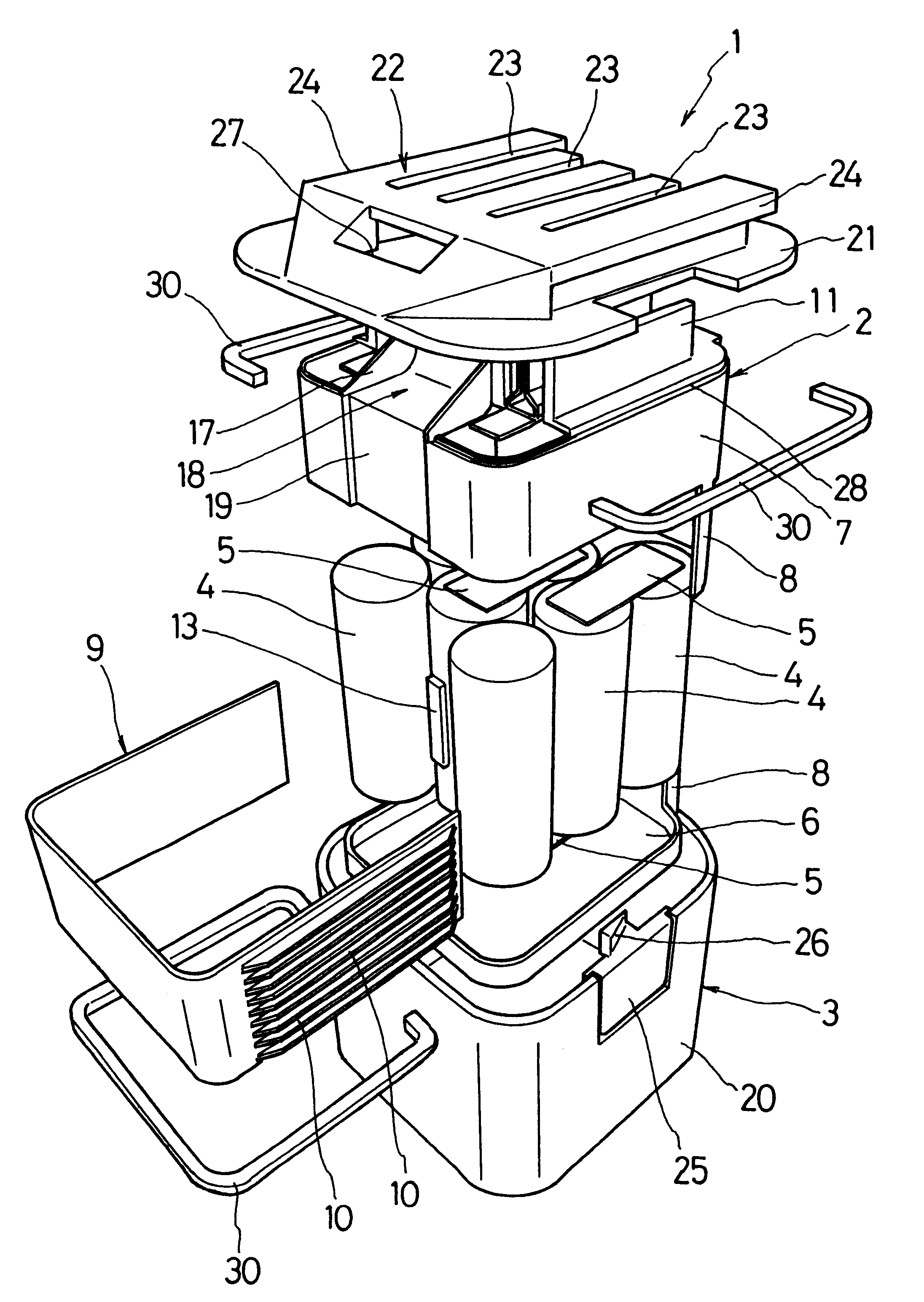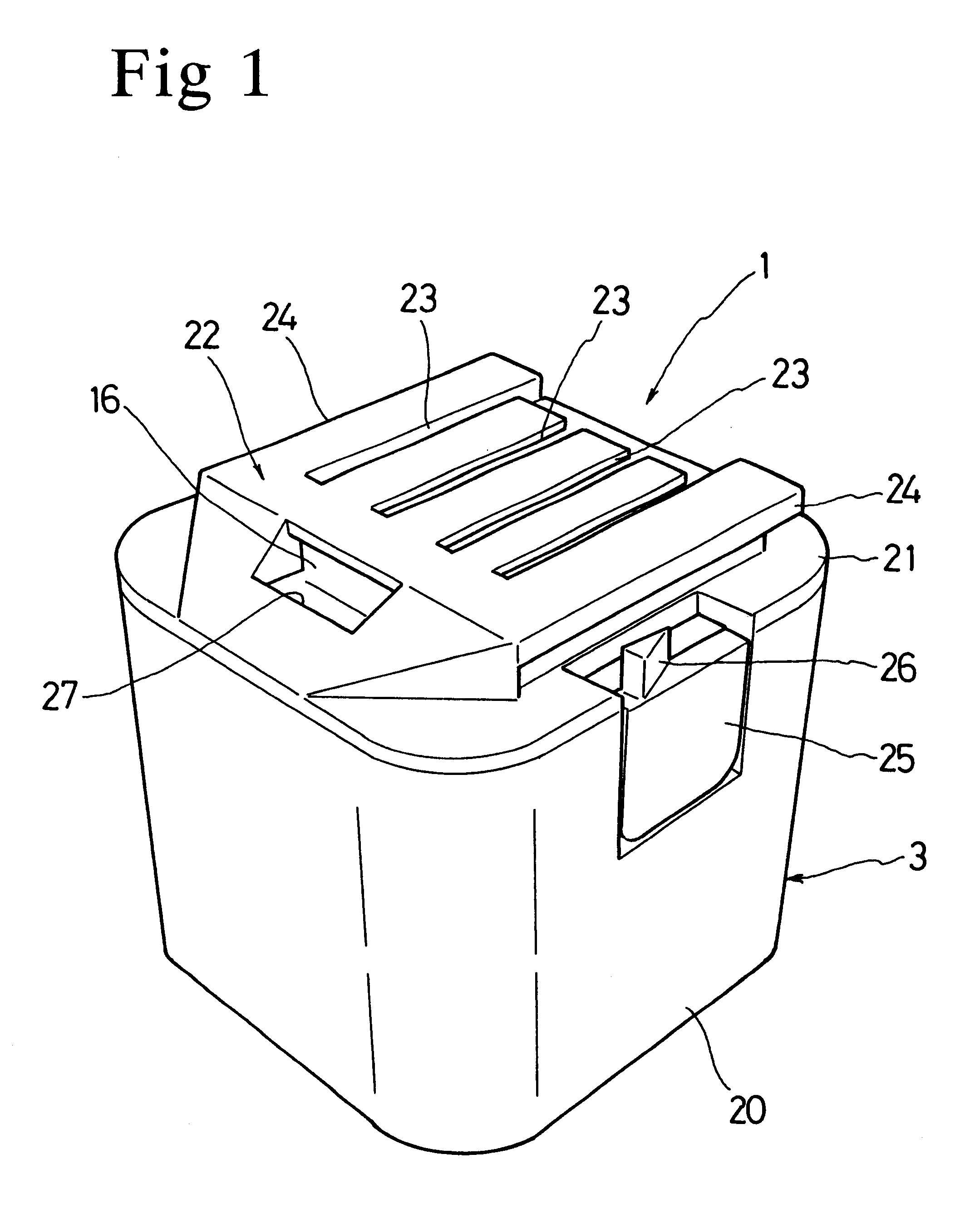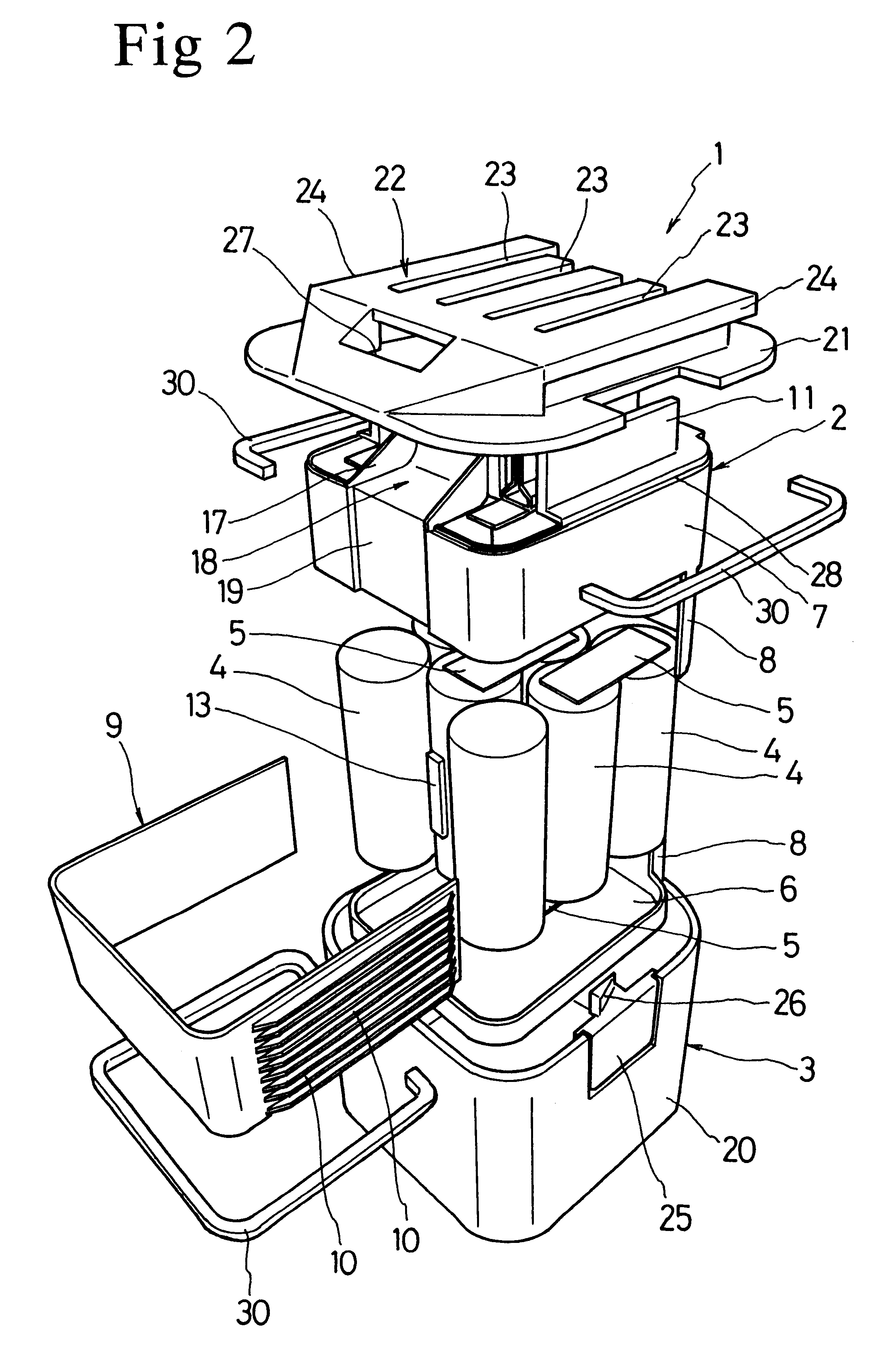Battery pack with improved heat radiation and sealing
a battery pack and heat radiation technology, applied in the field of battery packs, can solve the problems of increased manufacturing cost, leakage of electrolyte, shortening the service life of the cell,
- Summary
- Abstract
- Description
- Claims
- Application Information
AI Technical Summary
Benefits of technology
Problems solved by technology
Method used
Image
Examples
first embodiment
FIG. 1 is a perspective view of a battery pack I according to the present invention, and FIG. 2 shows an exploded view of the battery pack 1. The battery pack I has a double casing structure that includes a generally cubic inner case 2 for holding eight nickel metal hydride cells 4 in an upright position and a generally cubic outer case 3 for housing the inner case 2. The nickel metal hydride cells (hereinafter referred to as NiMH cells) 4 are connected in series by lead plates 5. The inner case 2 includes a base plate 6 on which the NiMH cells 4 are placed and a cover 7 disposed over the base plate 6. The inner case 2 further includes two coupling portions 8, each extending from the base plate 6 and the cover 7 for connecting the cover 7 to the base plate 6. The coupling portions 8 cover the side walls of the NiMH cells 4 located adjacent to the coupling portions 8, thus exposing the side walls of the other cells 4. Further included in the inner case 2 is an aluminum radiator plate...
second embodiment
In the structure of the first embodiment, if a large number of NiMH cells are contained within the inner case, some of the cells may not be disposed in contact with the radiator plate, thus failing to prevent heat buildup and deterioration of those cells. An alternate structure suitable for containing a large number of cells is described hereinafter with reference to FIGS. 7 and 8, in which identical or similar reference numerals or characters denote identical or similar parts or elements throughout the several views. Therefore, further description of such elements is omitted in order to avoid redundancy.
FIG. 7 is an exploded view of a battery pack 101 that includes an inner case 102 containing twenty-four NiMH cells 4, which are divided into two twelve-cell blocks 133. The battery pack 101 further includes two radiator plates 134 with ribs 135 that surround each block 133 of battery cells 4 so as to define between the blocks 133 a second air passage 136 connected to an air passage ...
PUM
 Login to View More
Login to View More Abstract
Description
Claims
Application Information
 Login to View More
Login to View More - R&D
- Intellectual Property
- Life Sciences
- Materials
- Tech Scout
- Unparalleled Data Quality
- Higher Quality Content
- 60% Fewer Hallucinations
Browse by: Latest US Patents, China's latest patents, Technical Efficacy Thesaurus, Application Domain, Technology Topic, Popular Technical Reports.
© 2025 PatSnap. All rights reserved.Legal|Privacy policy|Modern Slavery Act Transparency Statement|Sitemap|About US| Contact US: help@patsnap.com



